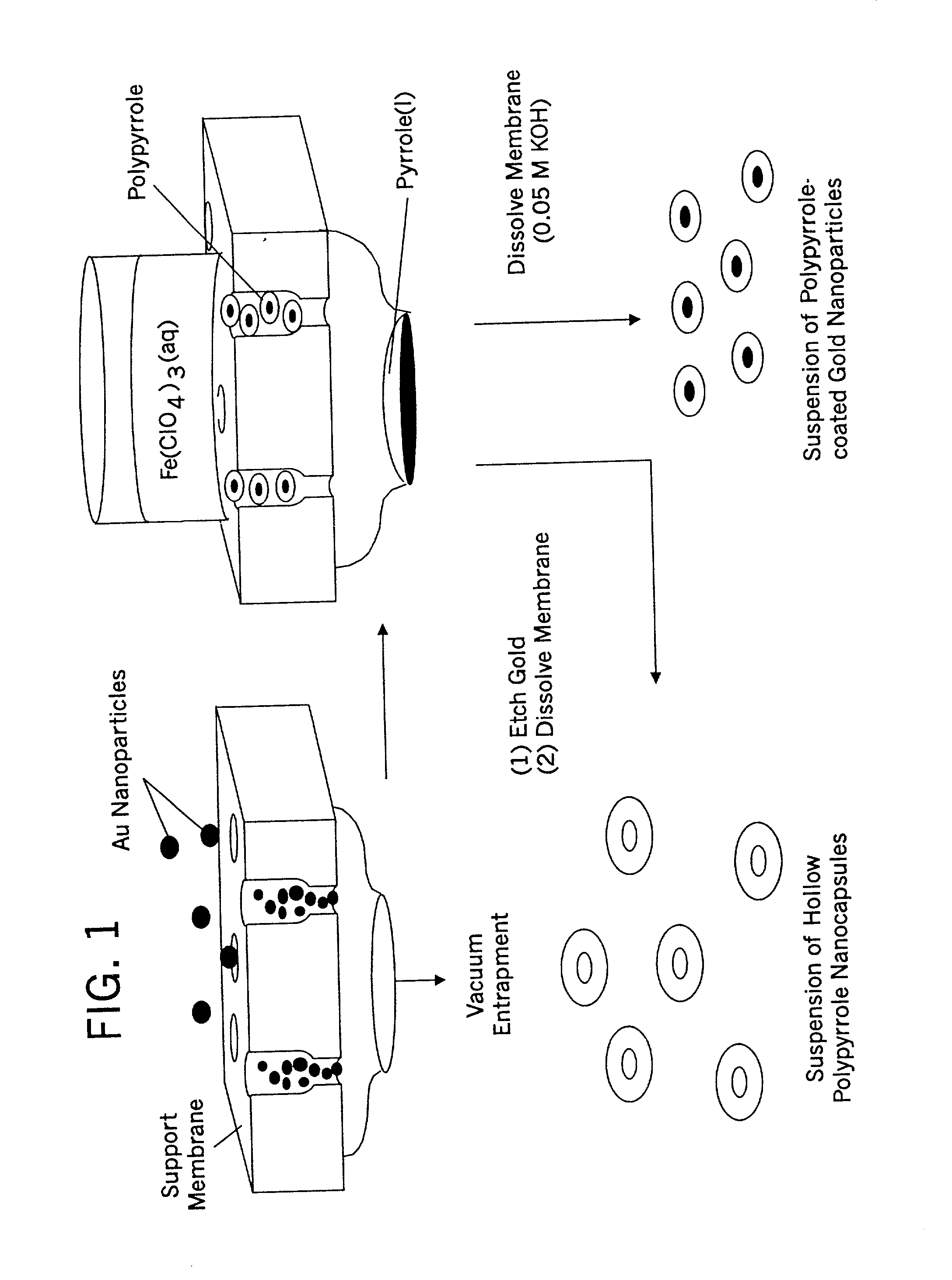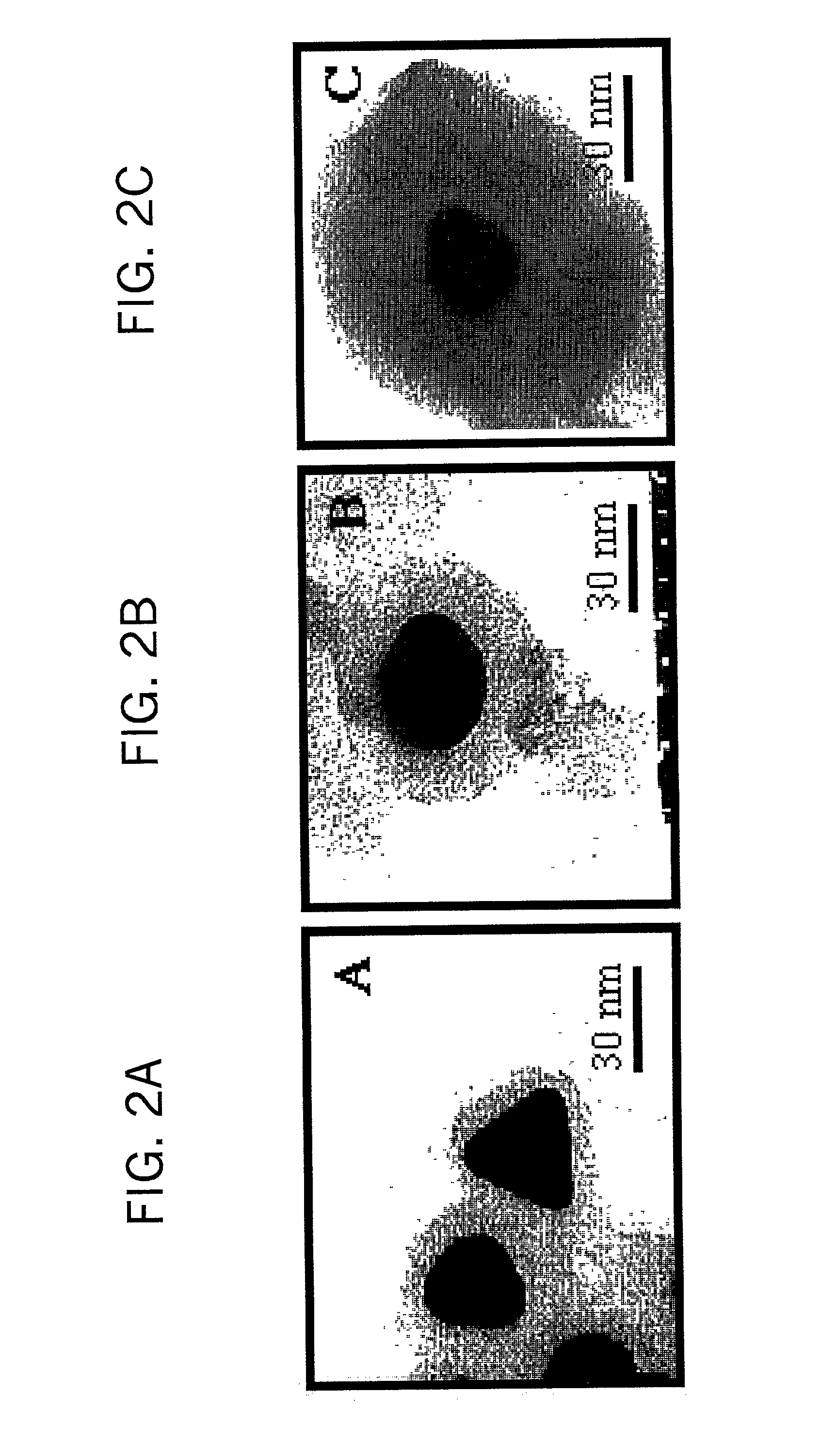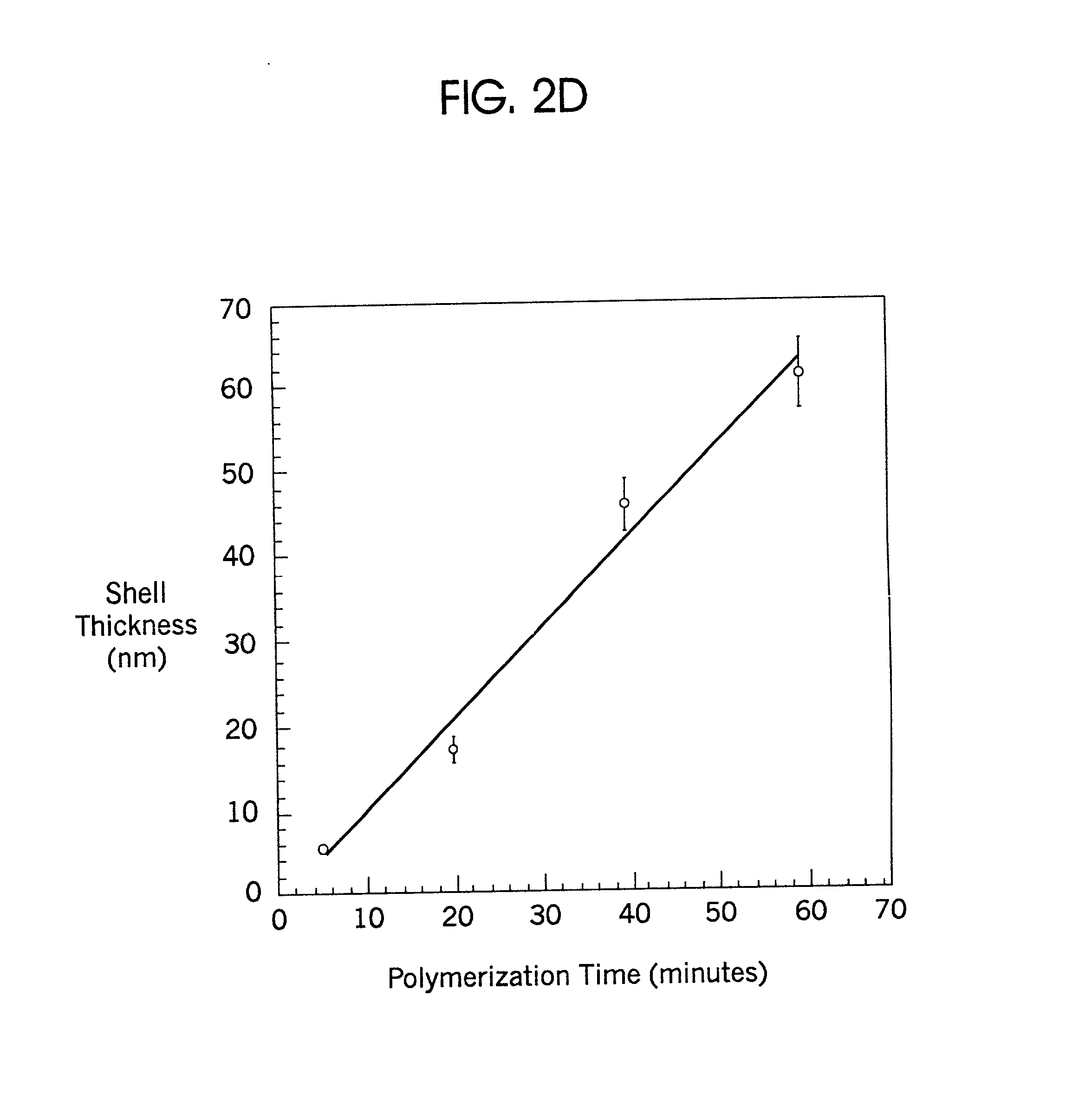Nanoparticle composites and nanocapsules for guest encapsulation and methods for synthesizing same
a technology of nanoparticles and composites, applied in the field of new nanoparticle composites, can solve the problems of inability to synthesize the same, the current availability of synthetic nanoparticles cannot meet the requirements of delivery/encapsulation materials, and the synthesis methods of the same cannot be found
- Summary
- Abstract
- Description
- Claims
- Application Information
AI Technical Summary
Benefits of technology
Problems solved by technology
Method used
Image
Examples
example 1
Molecular Transport Rates Into Solid Conductive Polymer-Gold Nanoparticle Composites
[0084] Transport rates for small molecules diffusion into conductive polymer-encapsulated gold nanoparticle composites are measured by monitoring the disappearance of the gold plasmon absorption vs. time when the composites are placed in a solution of gold etchant. Data for etchant K.sub.3[F.sub.3(CN).sub.6] / KCN are shown in FIGS. 5A-5B. These data are for 30 nm diameter gold particles encapsulated with neutral poly(N-methylpyrrole); similar data have been acquired for 200 nm diameter particles.
[0085] The measurements of transport rates through conductive polymer nanoparticles are extended also to other polymers (polypyrrole, polyaniline, etc.), thicker polymer shells, a variety of counter ions (e.g., NO.sub.2.sup.1-, Cl.sup.1-, p-toluenesulfonate, polystyrenesulfonate), larger gold oxidizing agents (e.g., trisbipyridylruthenium(III) and bulkier polyether substituted bipyridines) and multilayer polym...
example 2
Transport Rates of Gold Etchant into Conductive Polymer-Gold Particle Composites
[0086] An aspect of the conductive polymer nanocapsule of the present invention pertains to affecting small molecule transport rates by switching the oxidation state of the polymer. To characterize transport rates in poly(N-methylpyrrole) and poly(pyrrole) capsules, the gold plasmon absorption was monitored over time following exposure to the gold etch solution. FIGS. 5A-5B show that transport rates of etchant through poly(N-methylpyrrole)-coated gold nanoparticles depend on polymer oxidation state, those rates being faster for the neutral polymer. These results were rationalized by considering the relative densities of neutral vs oxidized poly(N-methylpyrrole). While applicants do not wish to be bound by any particular theory of operation, neutral poly(N-methylpyrrole) is known to contain a larger amount of void volume compared to oxidized poly(N-methylpyrrole)(Eisenberg, A. et al., Macromolecules (1990...
example 3
Guest Entrapment
[0091] The focus of this Example was to evaluate whether particle-bound ligands are displaced from the gold surface upon polymer formation, or if they remain attached to the particle surface and are ultimately trapped inside the hollow polymer capsule following gold dissolution. Rhodamine B was chosen as a guest because of its absorbance at about 556 nm, a region of relatively low absorptivity for poly(N-methylpyrrole). FIG. 4A shows visible spectra for 30 nm diameter gold particles (line A), rhodamine B-capped gold (line B), poly(N-methylpyrrole)-rhodamine B composite particles (line C), and poly(N-methylpyrrole) capsules following gold etch (line D). Following polymer formation, absorptions for 30 nm diameter gold particles (about 545 nm shoulder), oxidized poly(N-methylpyrrole), and rhodamine B were observed, implying that polymer formation does not cause surface-bound ligands to desorb from the particle. The rhodamine B absorption peak is also clearly evident aft...
PUM
| Property | Measurement | Unit |
|---|---|---|
| diameter | aaaaa | aaaaa |
| diameter | aaaaa | aaaaa |
| diameter | aaaaa | aaaaa |
Abstract
Description
Claims
Application Information
 Login to View More
Login to View More - R&D
- Intellectual Property
- Life Sciences
- Materials
- Tech Scout
- Unparalleled Data Quality
- Higher Quality Content
- 60% Fewer Hallucinations
Browse by: Latest US Patents, China's latest patents, Technical Efficacy Thesaurus, Application Domain, Technology Topic, Popular Technical Reports.
© 2025 PatSnap. All rights reserved.Legal|Privacy policy|Modern Slavery Act Transparency Statement|Sitemap|About US| Contact US: help@patsnap.com



